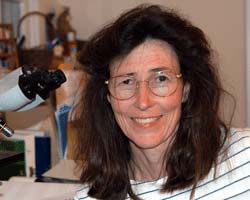
An international team of researchers will helicopter onto thePine Island Glacier ice shelf, one of Antarctica’s most active, remote andharsh spots, in mid-December — weather permitting. Their objective: to determinehow changes in the waters circulating under the fast-melting ice sheet arecausing the glacier to accelerate and drain into the sea.
If all goes to plan,the multidisciplinary group of 13 scientists, led by NASA’s emeritusglaciologist Robert Bindschadler and funded by the National Science Foundation(NSF) and NASA, will depart from McMurdo stationin mid-December and spend six weeks on the ice shelf. The team will use acombination of traditional tools and sophisticated new oceanographicinstruments to measure the ocean cavity shape underneath the ice shelf. Theyaim to determine how streams of warm water enter this cavity, move toward thevery bottom of the glacier and melt its underbelly, making it dump more than 19cubic miles of ice into the ocean each year.
“The project aims to determine the underlying causesbehind why Pine Island Glacier has begun to flow more rapidly and dischargemore ice into the ocean,” saidScott Borg, director of NSF’s Division of Antarctic Sciences, the group thatcoordinates all U.S. research in Antarctica on the southernmost continent and surrounding oceans.”This could have a significant impact on global sea-level rise over thecoming century.”
“Darn hard to get to” Pine Island Glacier has long been on the radar screen of Antarcticresearchers.
Pine Island Glacier has long been on the radar screen of Antarcticresearchers.
“Once satellite measurementsof Antarctica started to accumulate and we began to see which places werechanging, this area lit up as a spot where there was a large change going on,”Bindschadler said.
Bindschadler was the first person to ever set foot on thisisolated, wind-stricken corner of the world in January 2008. Previously,scientists doubted it was even possible to reach the crevasse-ridden ice shelf.But Bindschadler used satellite imagery to identify an area where planes couldland safely.
“The reason we haven’t gone therebefore is that it’s so darn hard to get to,” Bindschadler said. “So provingthat landing was doable was a relief.”
The glaciologist’s joydidn’t last: the ground proved to be too hard for the planes transporting theinstruments to land repeatedly. Logistics experts determined they would have touse helicopters to transport scientists and instrumentation in and out the iceshelf, and the whole plan for field campaigns had to be redesigned around thehelicopters’ availability.
Almost four years after thisfirst landing, Bindschadler and his team will be returning to the ice shelf tostudy its innards.
Scientists have determined that it’s the interaction ofwinds, water and ice that’s driving ice loss. Gusts of increasingly stronger westerlywinds push the Antarctic Circumpolar Current’s cold surface waters away fromthe continent: then, warmer waters that normally hover at depths below thecontinental shelf rise. The lifting warm waters spill over the border of thecontinental shelf and move along the floor, all the way back to the groundingline—the spot where the glacier comes afloat— causing it to melt. The warmsalty waters and fresh glacier meltwater combine to make a lighter mixture thatrises along the underside of the ice shelf and moves back to the open ocean, meltingmore ice on its way out. But, how much more ice melts? Bindschadler and his team need to findout to improve projections of how the glacier will melt and contribute to sealevel rise.
“All existing data (satellite images, variability of winds,submarine measurements) say this a highly variable system”, said Bindschadler.“But they’re all snapshots in time. Our team will be deploying instrumentationthat will get a longer record of the variability.”
Profiling oceanwaters One of the first tasks for the teamwill be using a hot water drill to make a 500-meter deep hole through the iceshelf. Once the drill hits the ocean, the scientists will send a camera to peerinto the ocean cavity, observe the underbelly of the ice shelf and analyze theseabed lying 500 meters below the ice.
One of the first tasks for the teamwill be using a hot water drill to make a 500-meter deep hole through the iceshelf. Once the drill hits the ocean, the scientists will send a camera to peerinto the ocean cavity, observe the underbelly of the ice shelf and analyze theseabed lying 500 meters below the ice.
Then, they will lower a setof instruments that Tim Stanton, an oceanographer with the Naval PostgraduateSchool, has built. The primary instrument in the package is an ocean profiler, which will move up and down avertical cable that connects it to a communication instrument package on thesurface of the ice shelf. As it moves, the profiler will measure temperature,salinity and currents from 3 meters below the ice to just above theseabed. It can also be instructed to park at specific depths and gauge waterturbulence and vertical transport of heat and salt along the water column. Thedevice will send all data to the surface tower that will then transmit it toStanton’s laboratory via a satellite phone.
The profiler is controlled remotely, and Stanton can vary its sampling rate.It will initially do fast sampling,to observe daily changes in water properties and circulation withinthe ocean cavity.
“After about a month of fast sampling, we’ll make it reduce the numberof profiles it takes each day, to capture seasonal changes in water propertiesand circulation,” Stanton said. “If it survives its first year, we’ll switch tosuper slow sampling, to measure how much heat is coming into the cavity everyyear.”
A second holewill support another instrument array similar to the profiler but fixed toa pole stuck to the underside of the ice shelf. The fixed-depth flux packagewill make measurements very close to the interface where ice and water exchangeheat.
Another gadget connected tothe fixed-depth package will be a string of 16 small temperaturesensors deployed within the lowermost ice to freeze in and become part of theice shelf. Their mission: to measure the vertical temperature profile,data that can tell scientists how fast heat is transmitted upwards through theice whenever hot flushes of water enter the ocean cavity.
“Since the temperature of the ice shelf determines its strength, we hypothesizethat strength may decrease as warmmelting events occur within the ocean cavity,” Stanton said.
Stanton plans on deploying up to two sets of instruments during this fieldseason, and a third one next year. “If we get one in, I’ll be happy. If I get two, I’ll be extraordinarily happy,”he said. One of the biggest challenges in building his pack of instruments,Stanton said, was designing it to fit the hole in the ice shelf, only 20centimeters wide and 500 meters long. A tight, long hole also means that theteam will only get one shot at deploying the instruments: once the package islowered into the ocean cavity, it cannot be pulled out.
“I have been deploying instruments intoice floes in the Arctic for the last 10 years, so I got quite used tojust putting them in and turning on my heels and walking away. But it’s stillquite hard to do,” Stanton said.
Explosions and sledgehammers
A geophysicist with Penn StateUniversity, Sridhar Anandakrishnan, will create tiny earthquakes to studythe shape of the ocean cavity and the properties of the bedrock under the PIGice shelf. He will be doing measurements in about three-dozen spots in theglacier, using helicopters to hop from oneplace to another. Anandakrishnan’s technique, formally called reflectionseismology, involves generating waves of energy by setting up small explosionsor by using instruments similar to sledgehammers to bang the ice. He’ll recordhow long it takes for the waves to travelthrough ice and water, bounce off the seabed and return, and he’ll analyze thestrength of the echo. Both factors will tell him about the thickness of the iceand water.
Anandakrishnan’s technique, formally called reflectionseismology, involves generating waves of energy by setting up small explosionsor by using instruments similar to sledgehammers to bang the ice. He’ll recordhow long it takes for the waves to travelthrough ice and water, bounce off the seabed and return, and he’ll analyze thestrength of the echo. Both factors will tell him about the thickness of the iceand water.
“[The technique] is identicalto the way bats and dolphins do echolocation: they send out a sound and listento the echo – both the time and direction of the echo tell them about thedistance to their prey,” he said.
Anandakrishnan also wants tostudy the properties of the bedrock beneath the ice.
“When glaciers are slidingover the bedrock, they do it very differently depending on whether it is roughor smooth,” he said.
Finally, the geophysicistwill inspect a mysterious ridge that runs across the ocean cavity under the icesheet. This ridge was unknown to researchers when they designed their projectin the early 2000s; it wasn’t until 2009 that an unmanned submarine operated bythe British Antarctic Survey detected it. Its existence has made the scientistsrethink where they will place their oceanographic instruments under the iceshelf, so that they don’t hit the ridge while the glacier advances toward thesea.
“ThePine Island Glacier ice shelf continues to be the place where the action istaking place in Antarctica,” Bindschadler said. “It only can beunderstood by making direct measurements, which is hard to do. We’re doing thishard science because it has to be done. The question of how and why it ismelting is even more urgent than it was when we first proposed the project overfive years ago.”
Text by Maria-José Viñas. Pine Island Glacier ice tongue image originally published on the Pine Ice Glacier Ice Shelf page. Image of Bob Bindschadler on the ice shelf originally published here. Ocean profiler image originally published on the Pine Island Oceanography Program website. Image of Sridhar Anandakrishnan originally posted by the National Science Foundation.

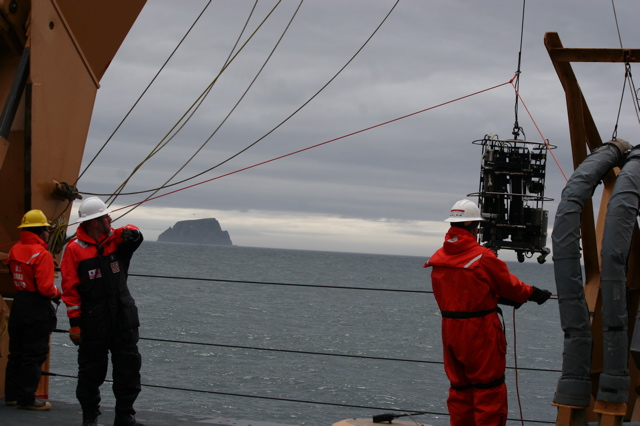





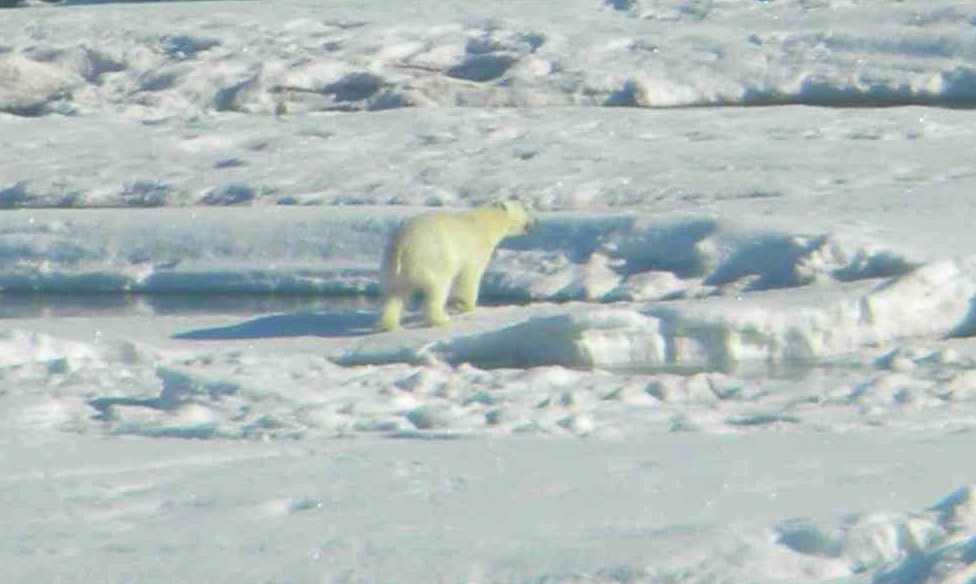

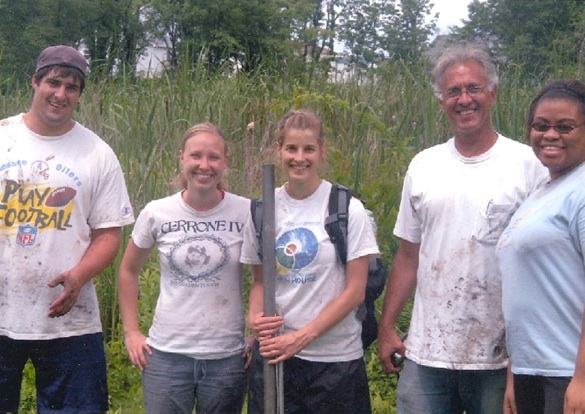

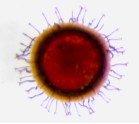
 jpg.jpg)
